
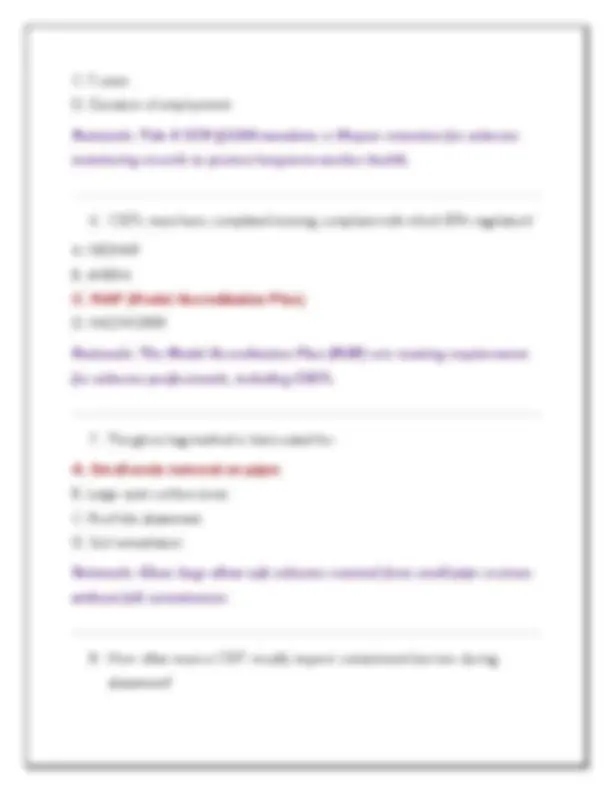
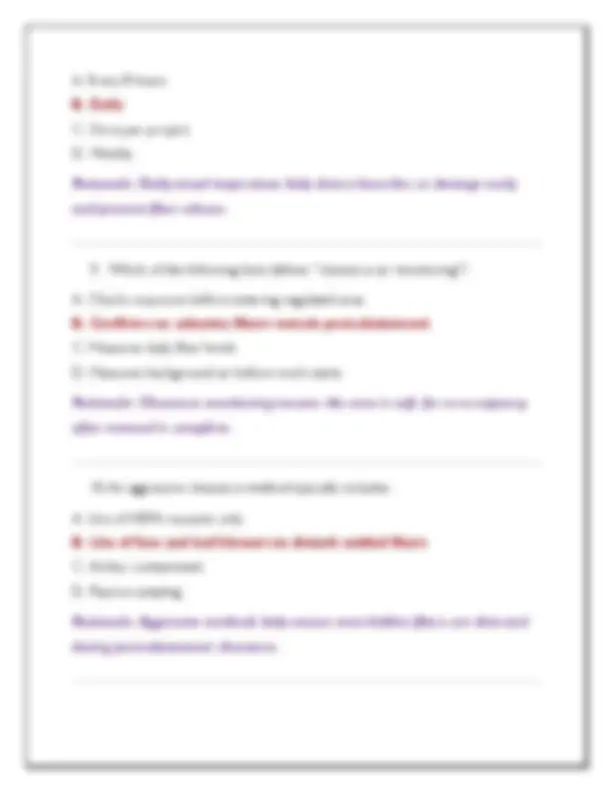
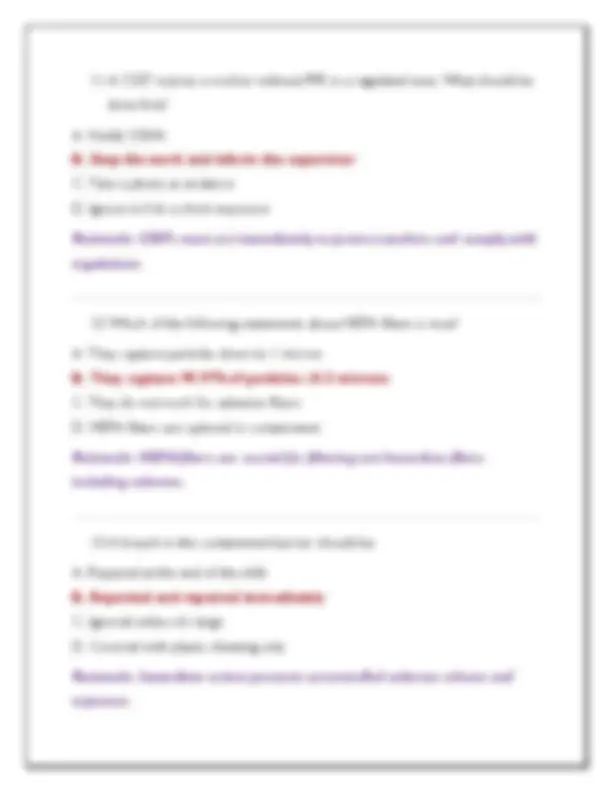
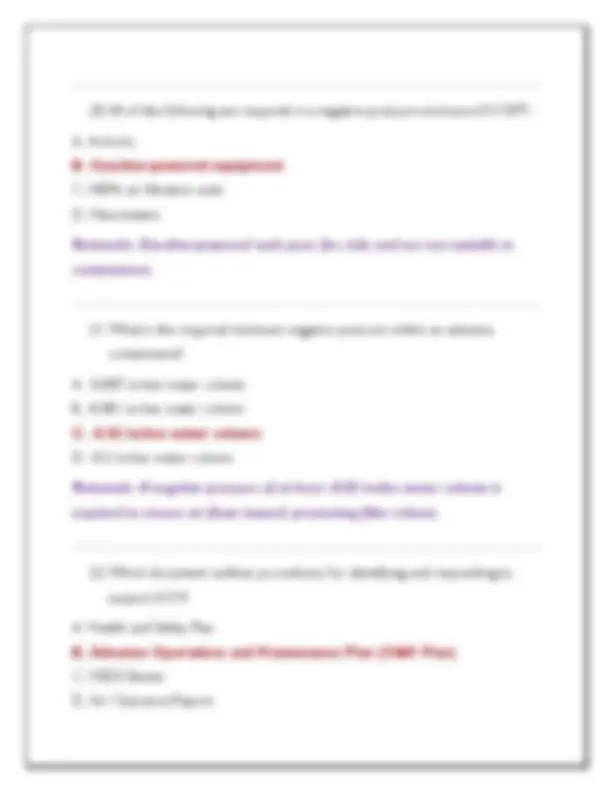
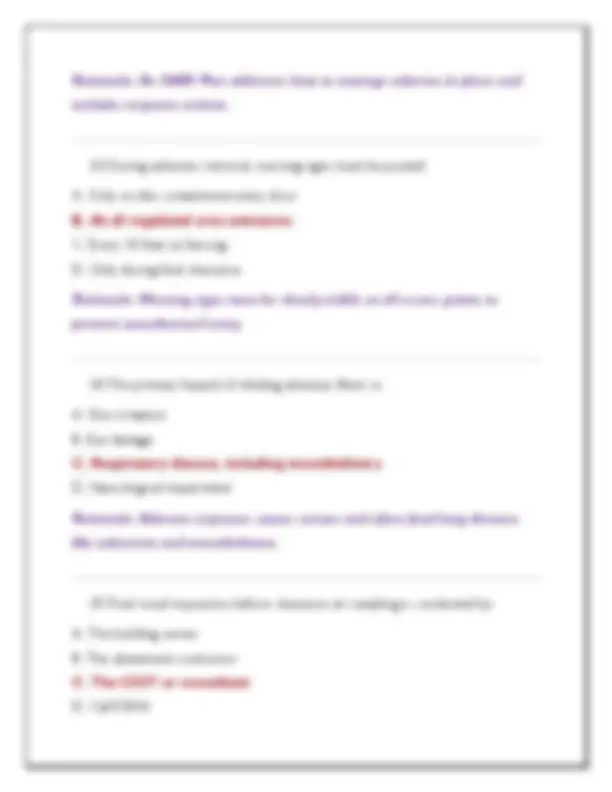
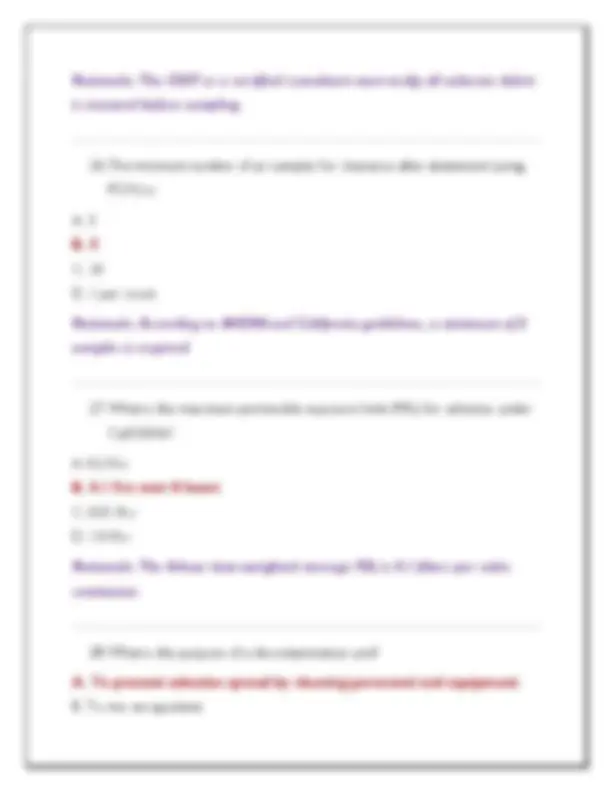
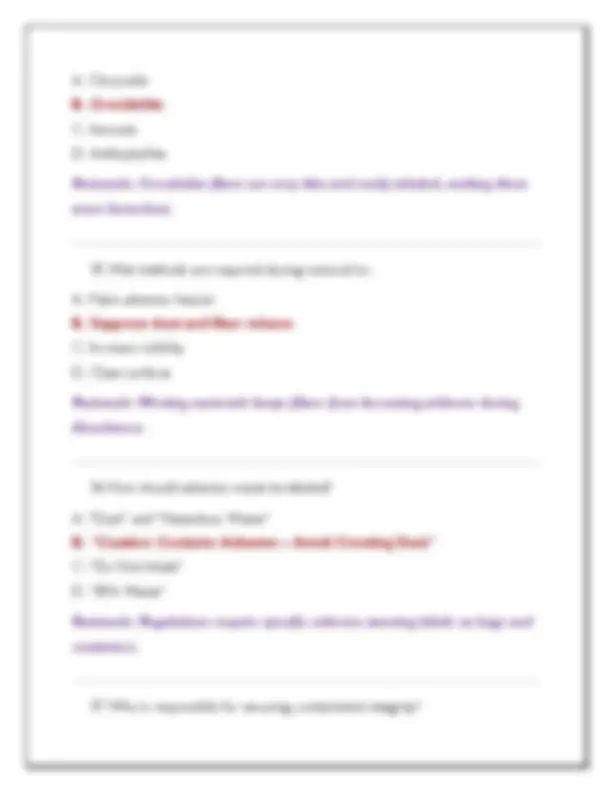
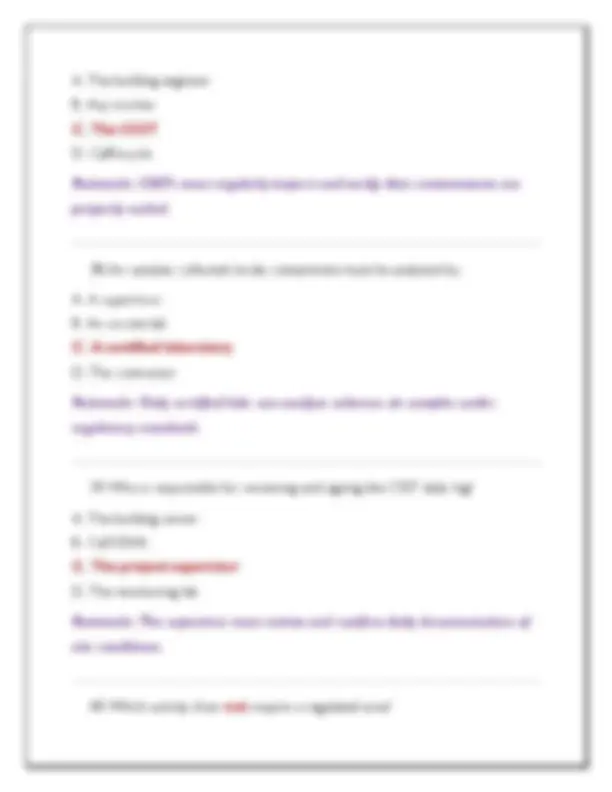
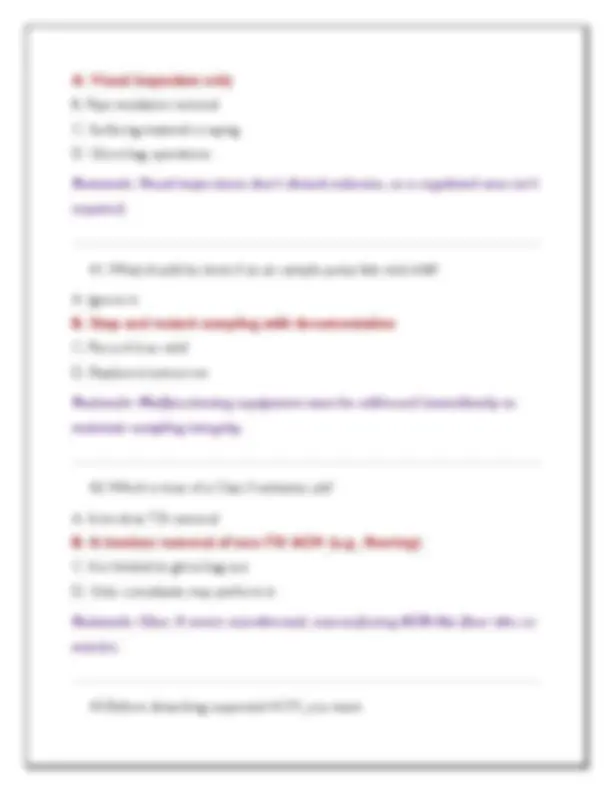
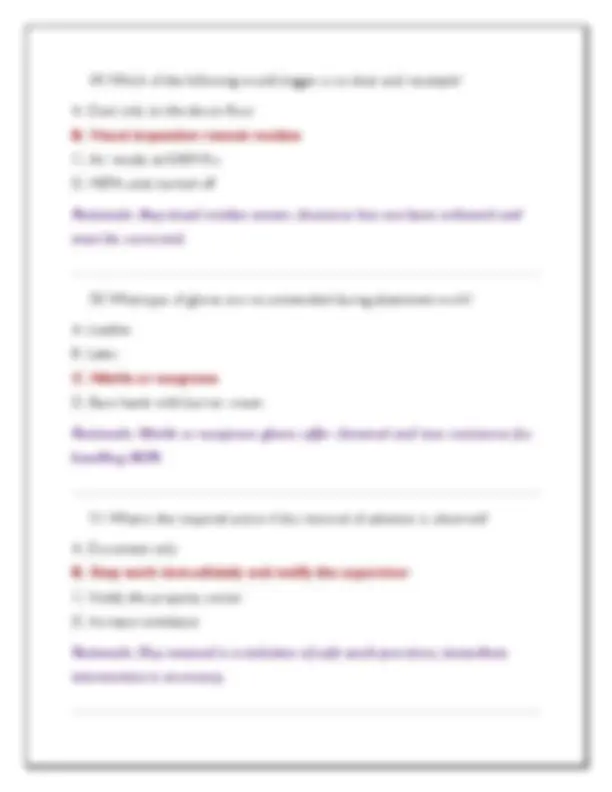
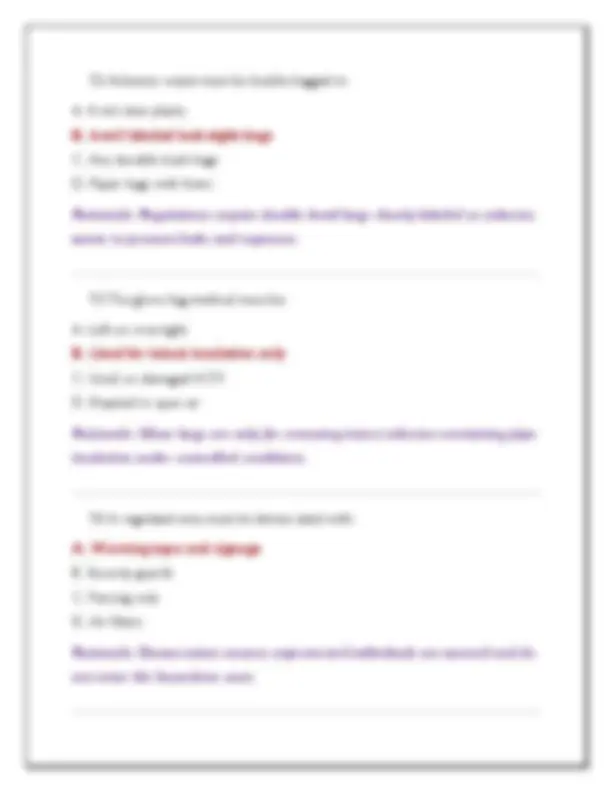
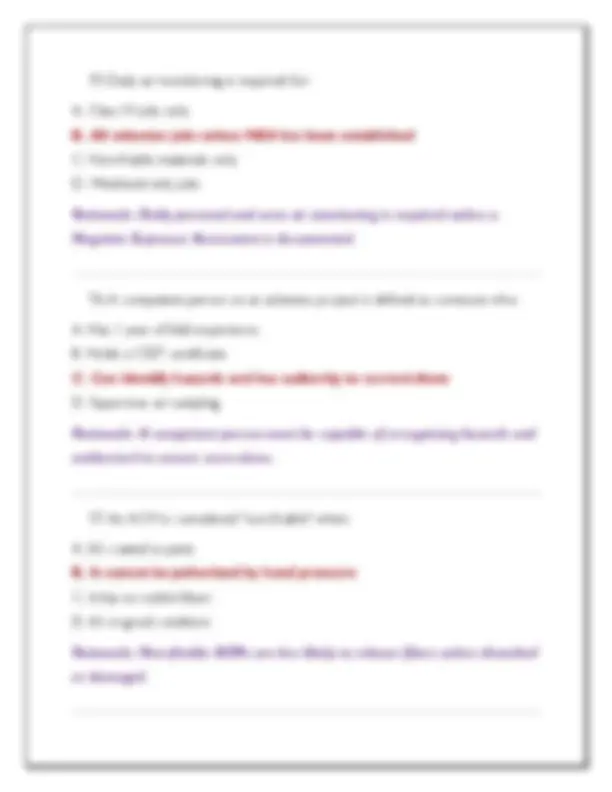
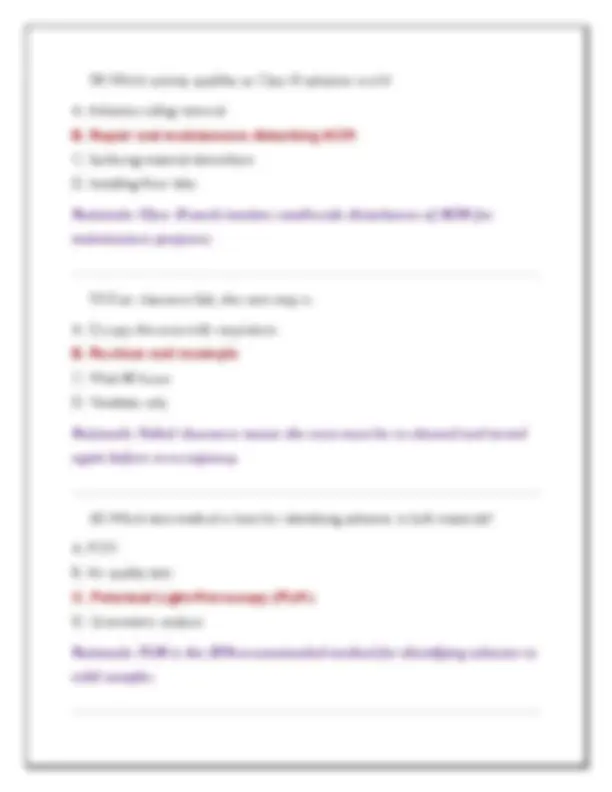
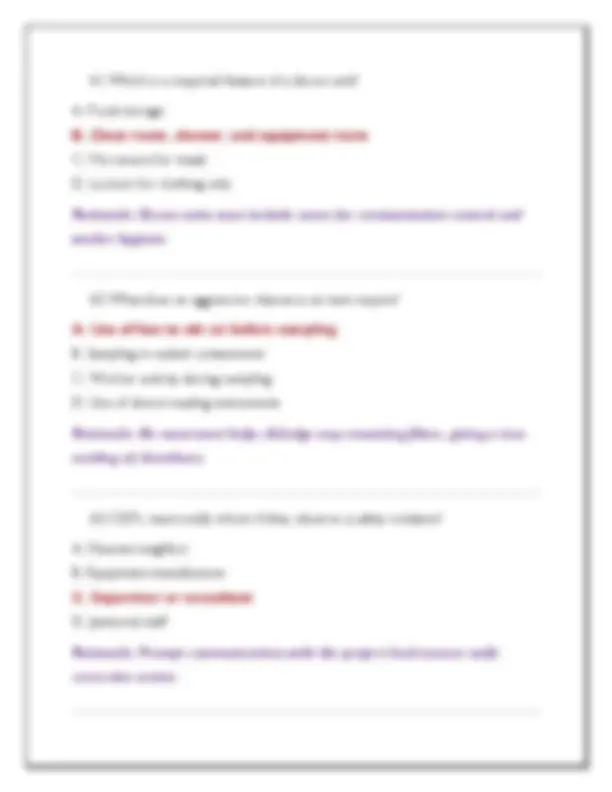
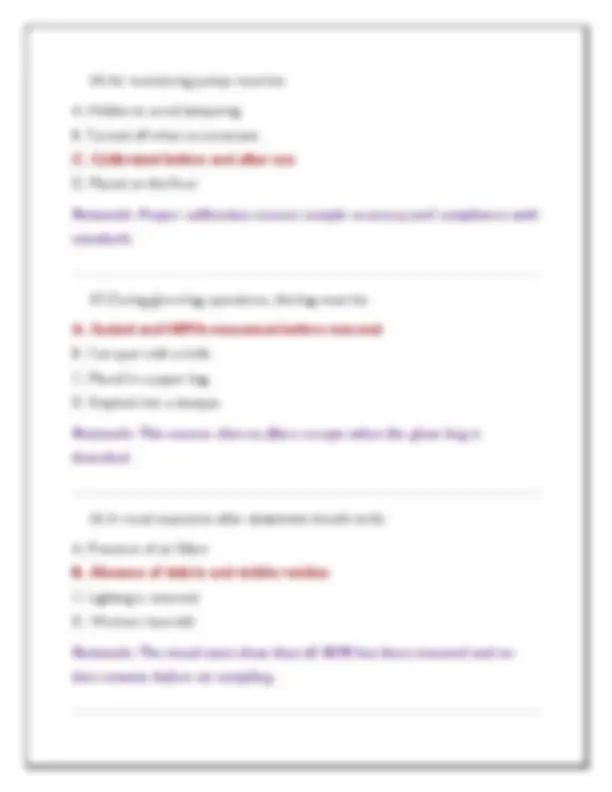
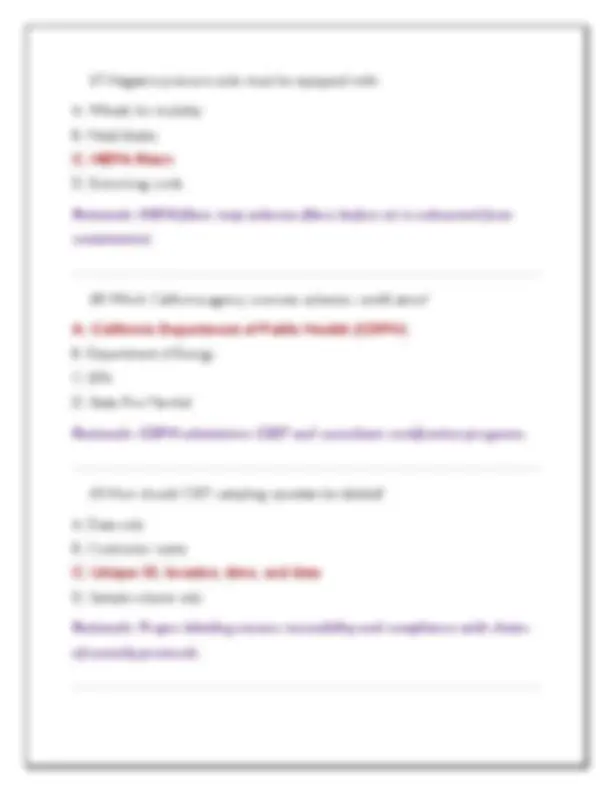
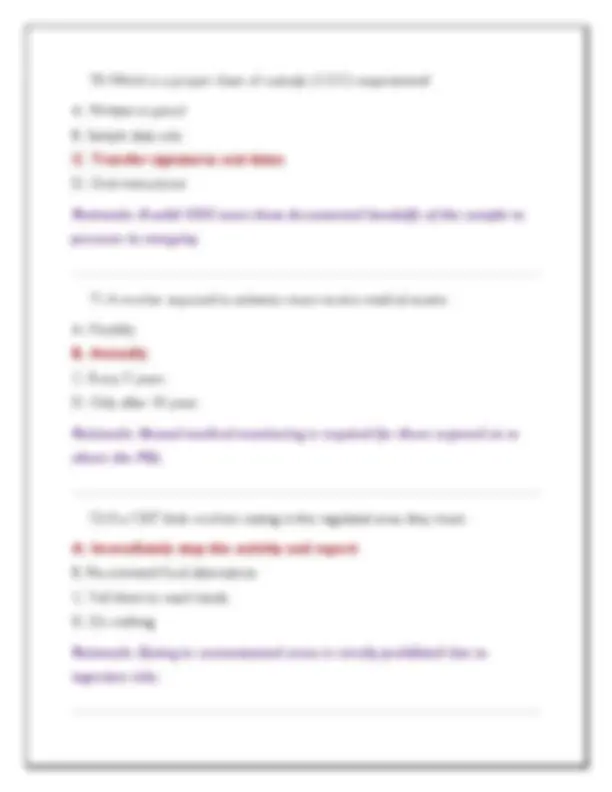
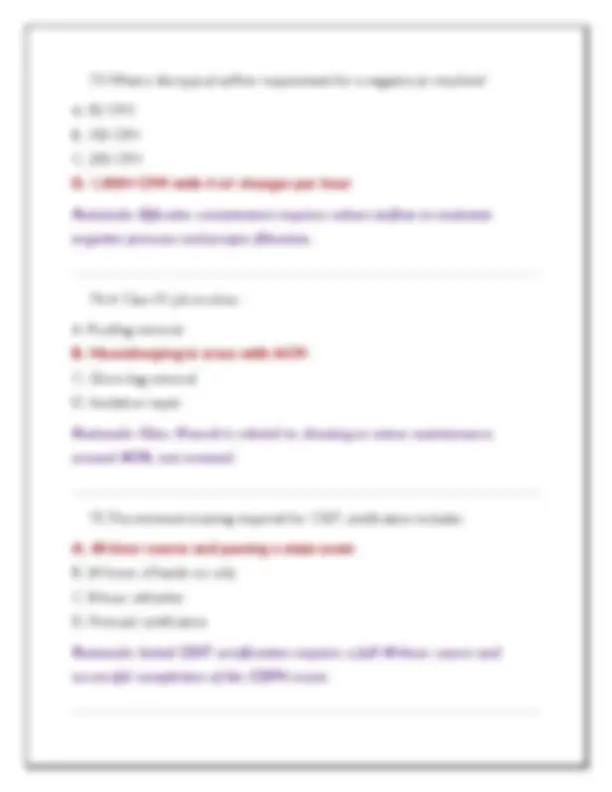
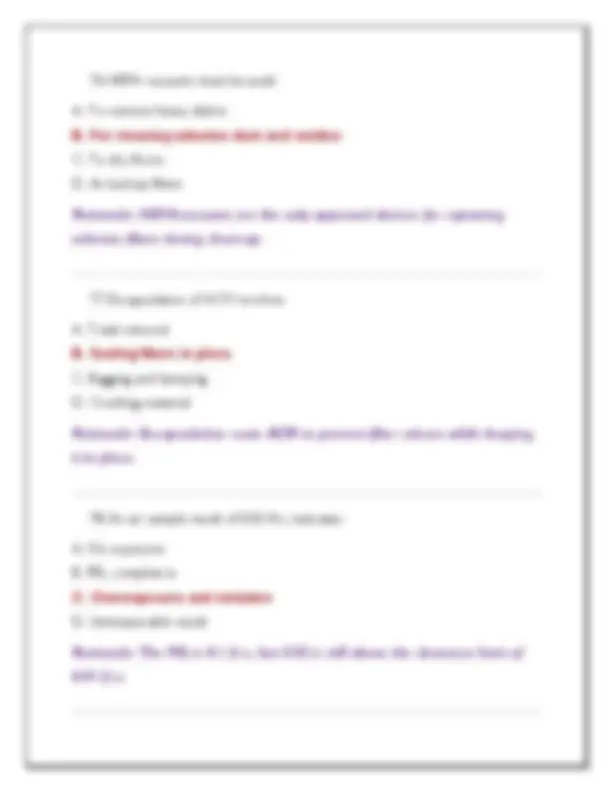
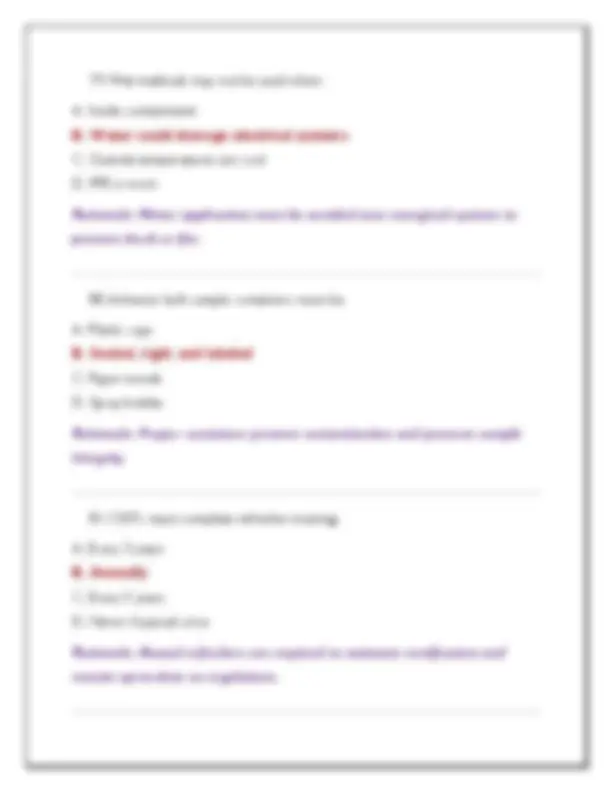
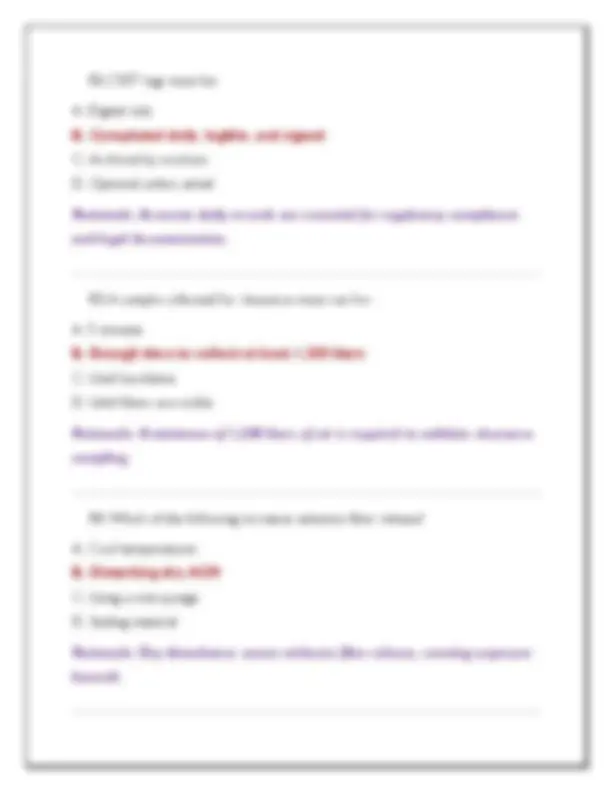
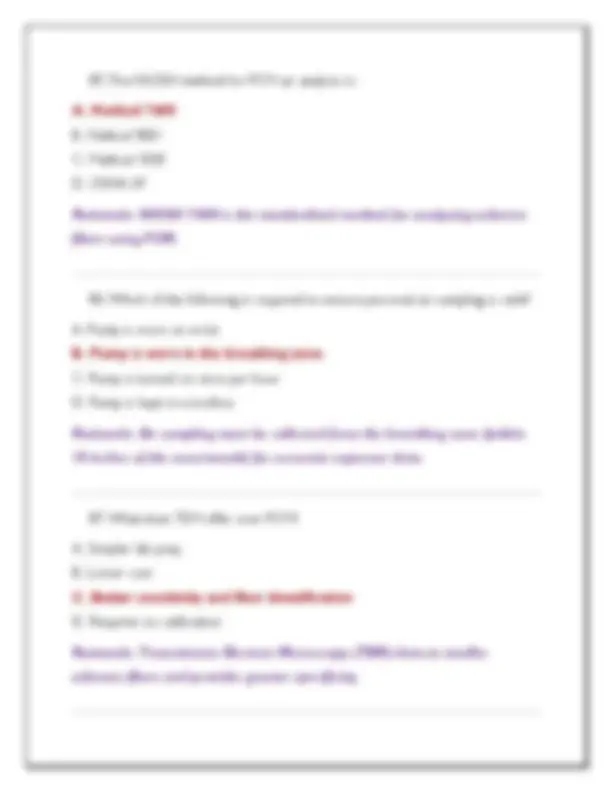
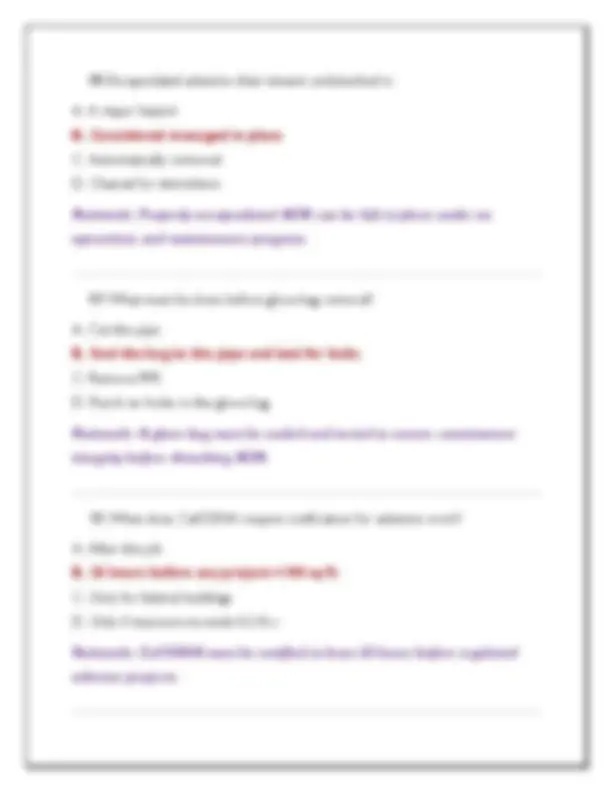
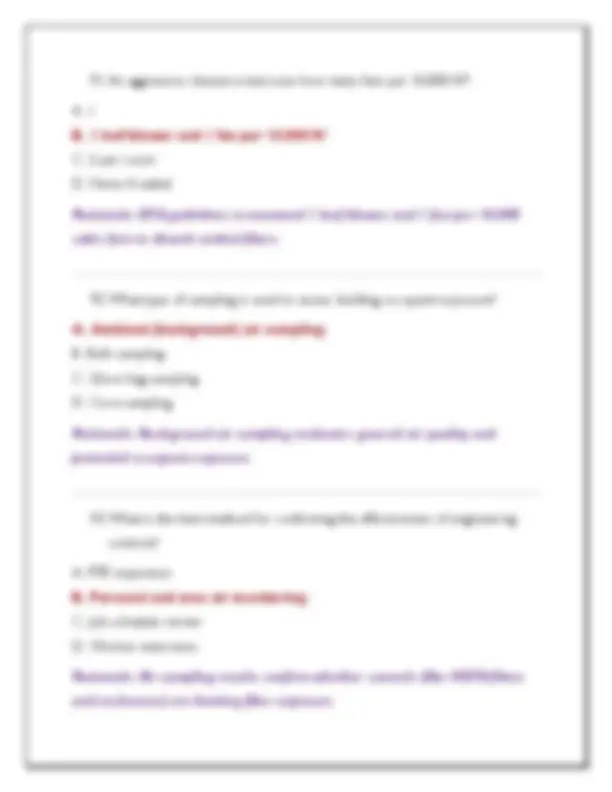
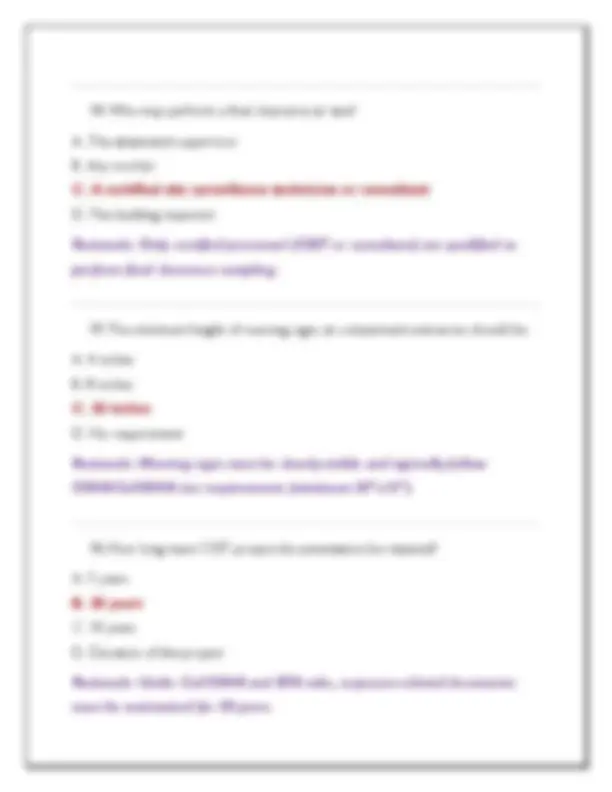
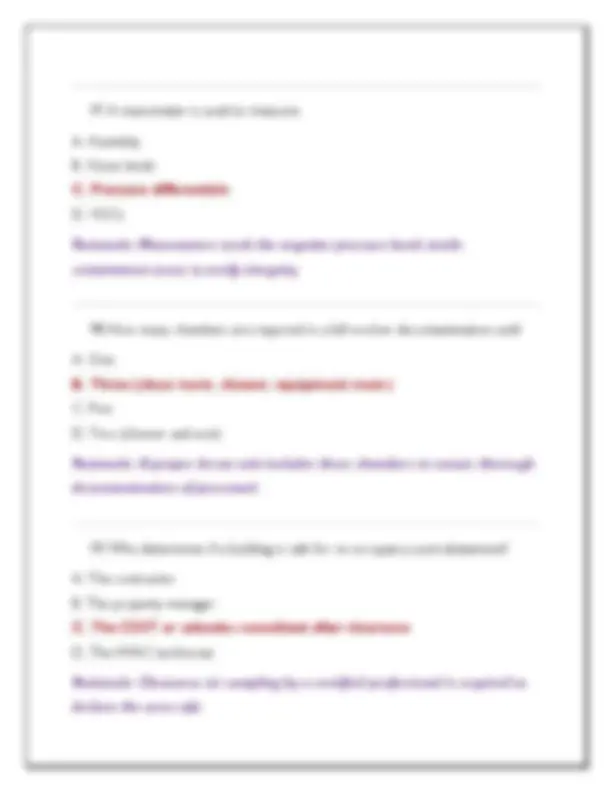
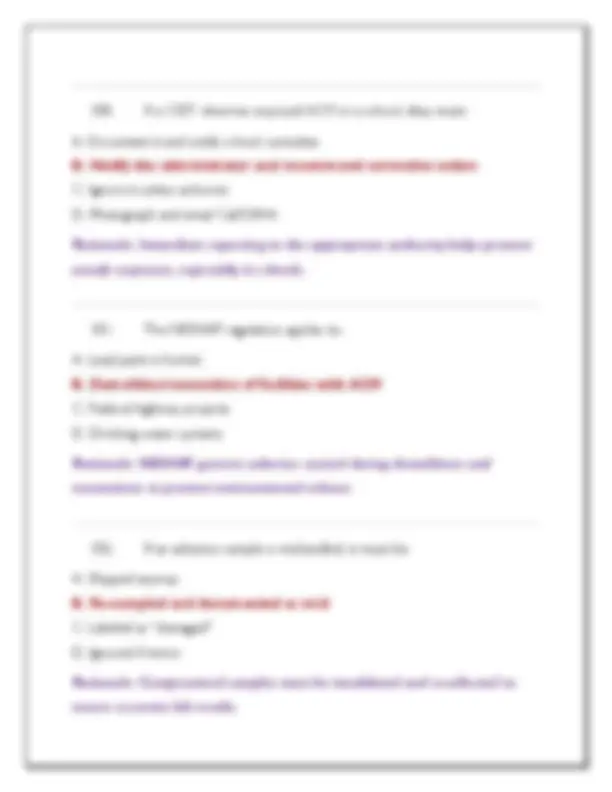
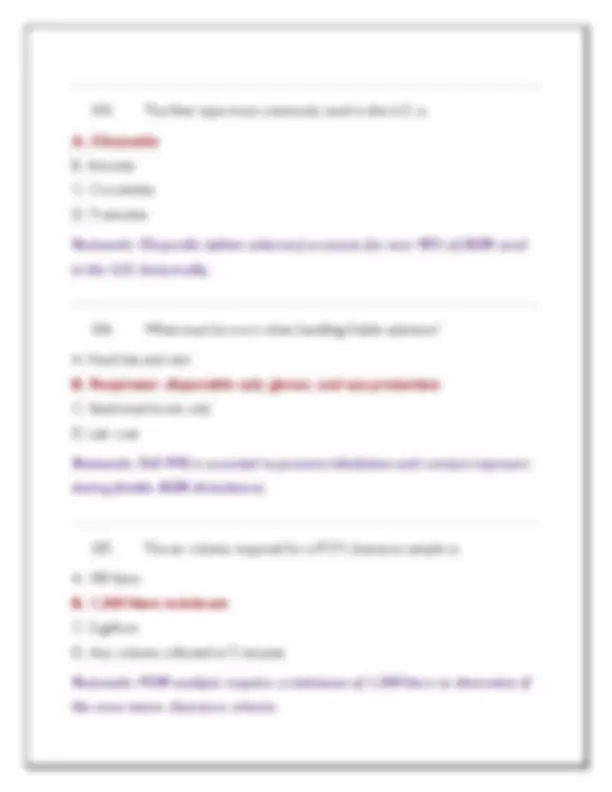
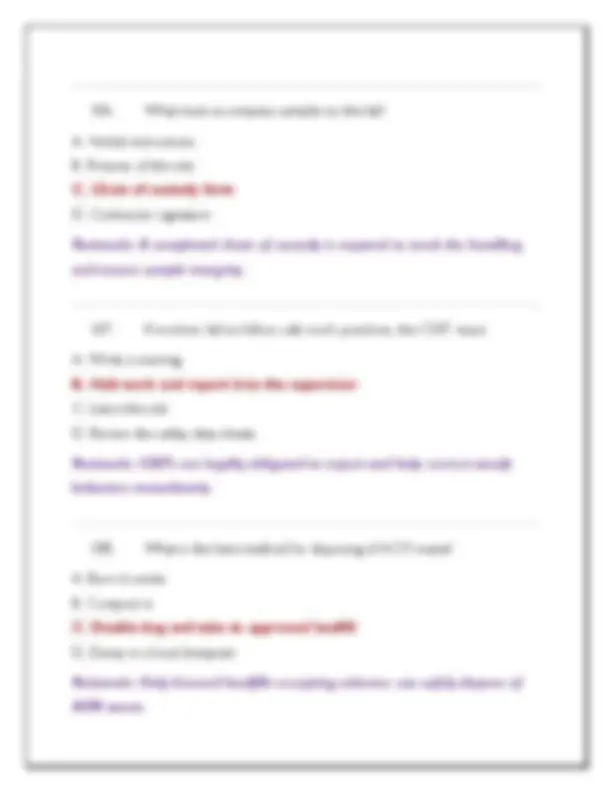
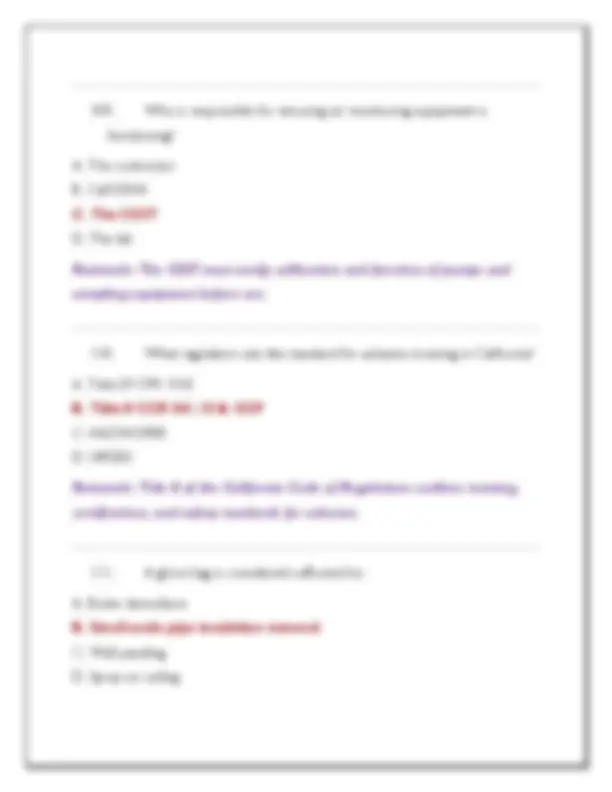
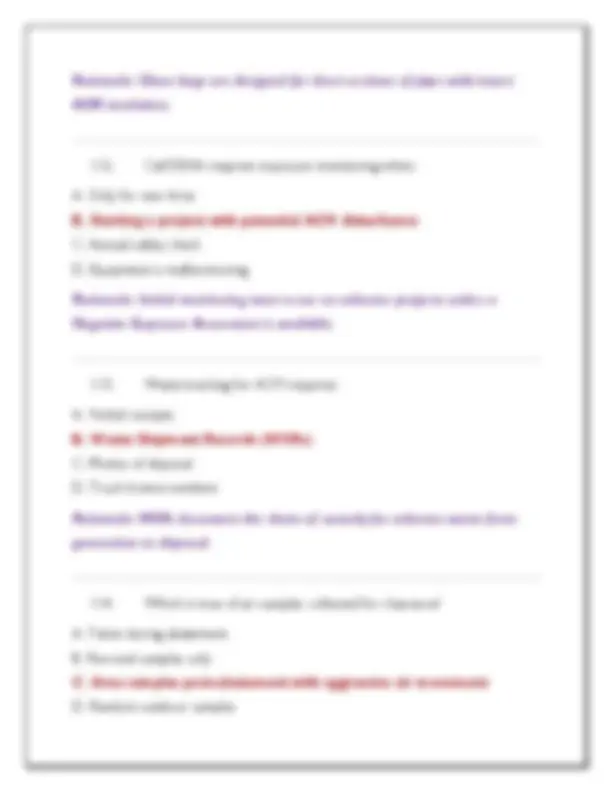
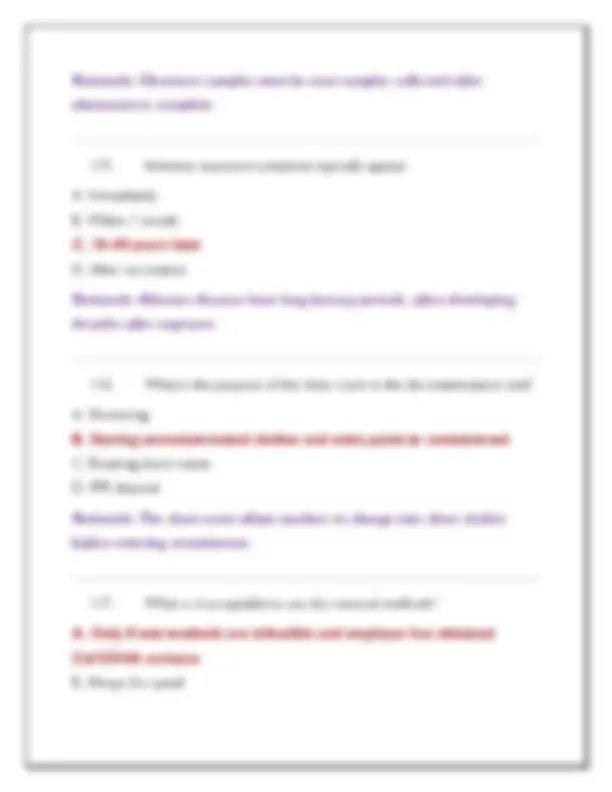
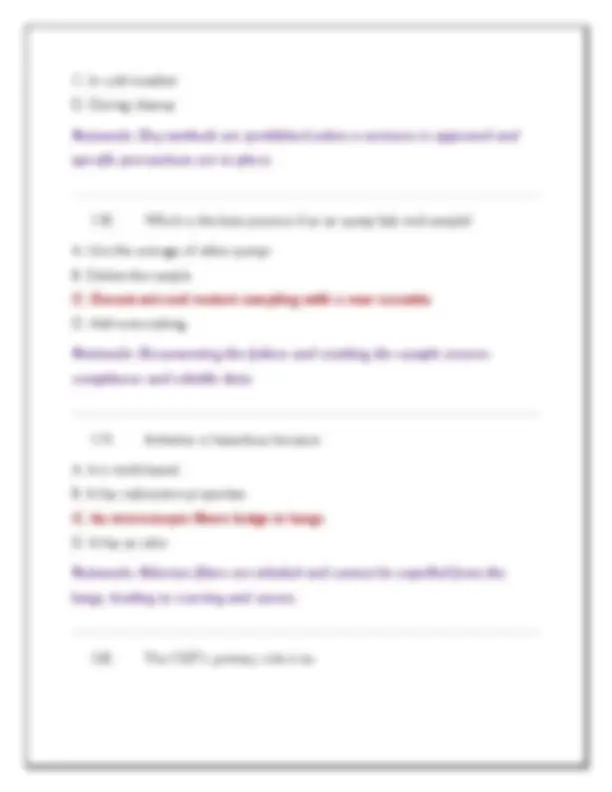
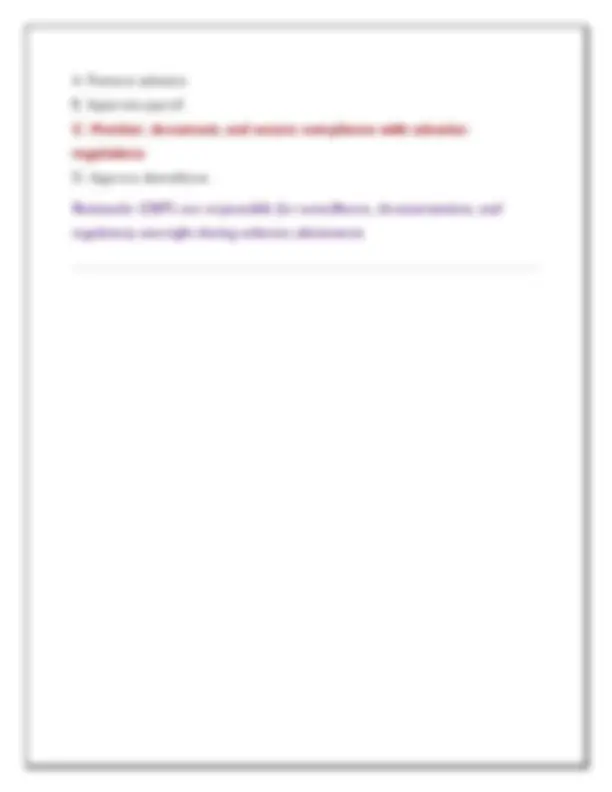


Study with the several resources on Docsity

Earn points by helping other students or get them with a premium plan


Prepare for your exams
Study with the several resources on Docsity

Earn points to download
Earn points by helping other students or get them with a premium plan
Community
Ask the community for help and clear up your study doubts
Discover the best universities in your country according to Docsity users
Free resources
Download our free guides on studying techniques, anxiety management strategies, and thesis advice from Docsity tutors
Certified Site Surveillance Technician (CSST) Exam Questions And Correct Answers (Verified Answers) Plus Rationales 2025 Q&A | Instant Download PDF California-specific regulations and requirements
Typology: Exams
1 / 42

This page cannot be seen from the preview
Don't miss anything!



































California-specific regulations and requirements.
Rationale: CSSTs must halt work if fiber levels exceed OSHA/Cal-OSHA PELs to prevent health hazards.
A. Every 8 hours B. Daily C. Once per project D. Weekly Rationale: Daily visual inspections help detect breaches or damage early and prevent fiber release.
Rationale: The CSST or a certified consultant must verify all asbestos debris is removed before sampling.
C. To filter air D. To store ACM waste Rationale: Decon units contain and clean contaminants before workers exit the work area.
A. Chrysotile B. Crocidolite C. Amosite D. Anthophyllite Rationale: Crocidolite fibers are very thin and easily inhaled, making them more hazardous.
A. The building engineer B. Any worker C. The CSST D. CalRecycle Rationale: CSSTs must regularly inspect and verify that containments are properly sealed.
A. Spray it with water B. Confirm asbestos content by bulk sampling C. Seal off the area D. Notify local health department Rationale: You must first determine if asbestos is present before disturbing materials.
A. Cal/OSHA only B. Workers only C. The project supervisor and consultant D. The lab Rationale: The CSST must notify the responsible parties to address non- compliance promptly.